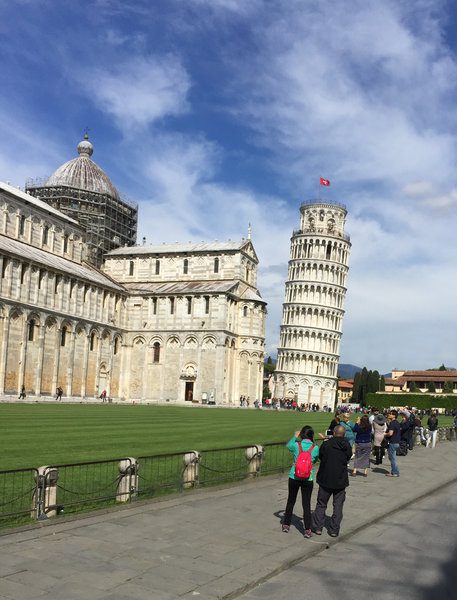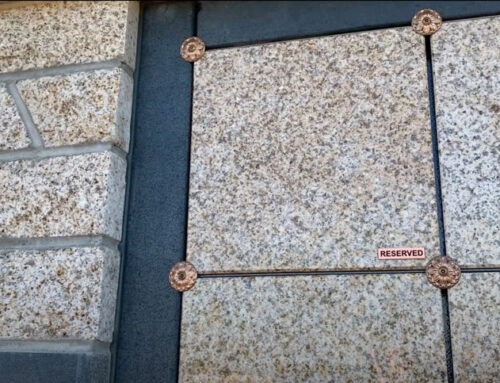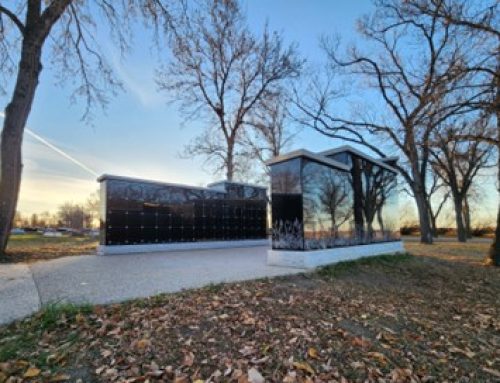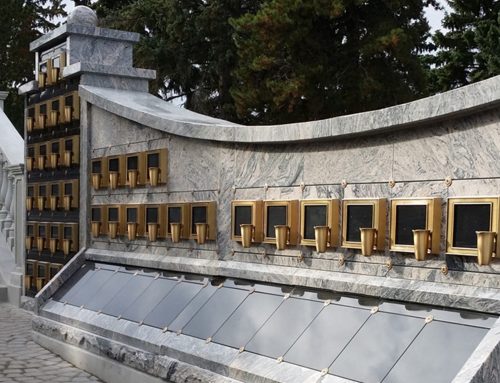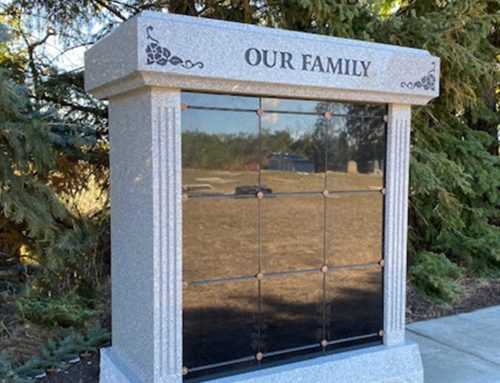Columbarium Foundation Preparation
Why Soil Testing and Planning Matter
Planning a columbarium installation involves more than just selecting a design and location. One of the most crucial—but often overlooked—steps in this process is preparing a strong and stable foundation. Just like any other long-lasting structure, a columbarium must be built on ground that can properly support its weight for decades to come.
If you’re tempted to skip soil testing before pouring the concrete foundation, consider the cautionary tale of the Leaning Tower of Pisa. Built in the 12th century on weak, shifting soil composed of soft clay, sand, and silt, the tower began to lean even before construction was completed. Over the centuries, it took millions in repairs and high-level engineering to prevent its collapse—a problem that can be avoided today with proper ground testing from the start.
While your columbarium project may not be as tall or heavy as the Pisa tower, the same principles apply. Inadequate soil conditions or improper foundation preparation can lead to costly issues down the line—from cracks and uneven settling to full structural instability.
Why Soil Testing Is Essential
Before any concrete is poured, soil testing must be carried out by a qualified concrete contractor and geotechnical engineer licensed to work in your state. This step provides key data that guides the entire foundation design process. The soil test helps determine:
- Soil composition – including clay, silt, sand, and organic material
- Load-bearing capacity – the weight the soil can safely support
- Compaction and density – which affect stability
- Moisture content and drainage – critical for long-term integrity
- Underground Utility locates – a necessary stage before digging
These test results will influence decisions about:
- The type and thickness of the foundation slab
- Whether additional supports like screw-piles or pilings are needed
- The concrete mix required for strength and durability
- How to mitigate site-specific risks such as frost heave, settling, or seismic activity
The soil testing company will issue a technical report, which can also be submitted to local authorities if permits are required. This report is a key document that helps your concrete contractor and engineer ensure long-term structural stability.
Columbarium Foundation Preparation Planning & Engineering Guidance
At this stage, it’s important to involve professionals:
- A licensed engineer or geotechnical specialist can interpret the soil data and recommend the right type of foundation.
- A concrete contractor familiar with local soil and weather conditions can handle the actual pour, leveling, and curing.
The engineer will also consider extreme weather and seismic risks in your area, including hurricanes, tornadoes, earthquakes, and frost. Based on this, they will help determine whether the columbarium must be anchored or reinforced.
We recommend extending the foundation footprint by at least 3 inches on all sides beyond the columbarium base dimensions. This extra buffer helps during installation and ensures the granite base sits flush and secure.
Columbarium Foundation Preparation Design Styles: Raised vs. Flush
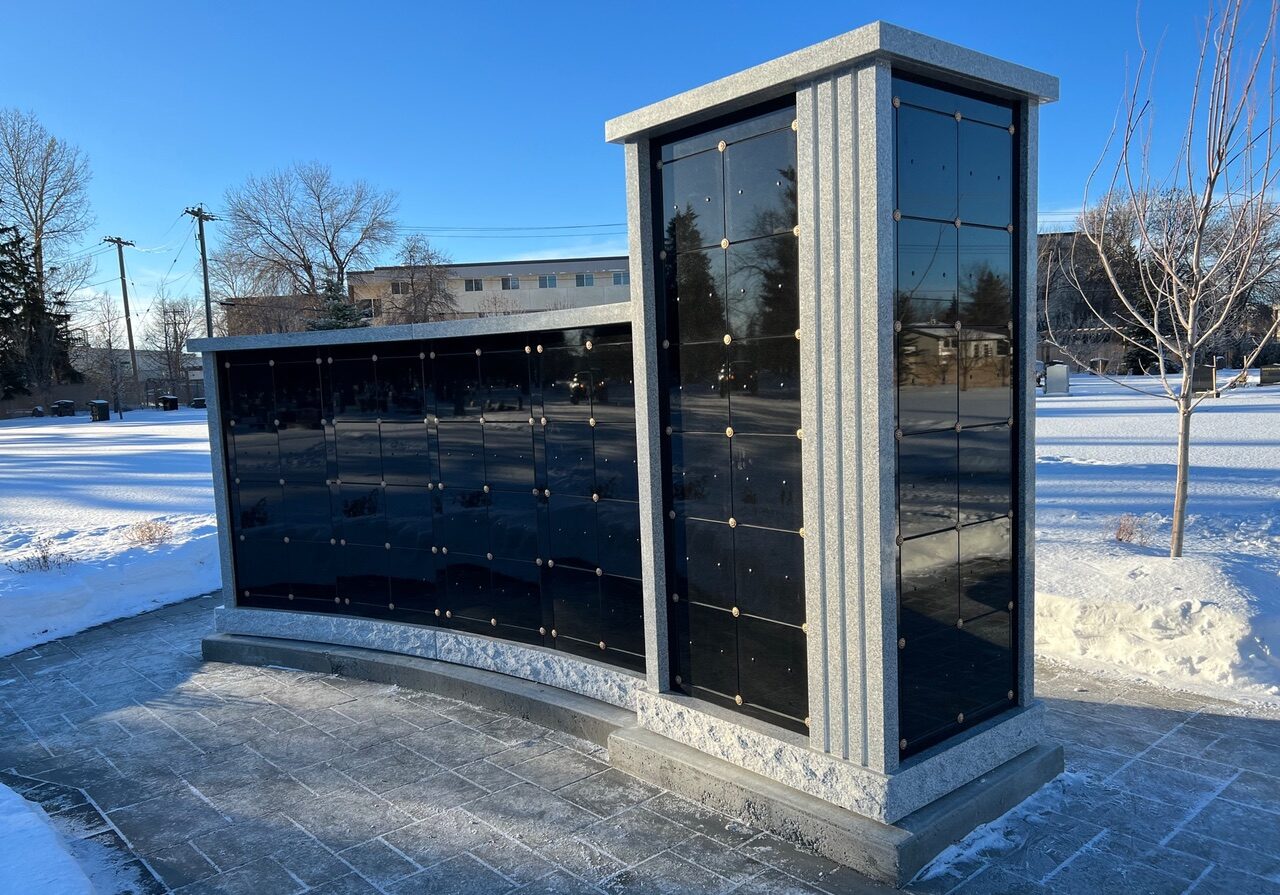
Raised Foundation
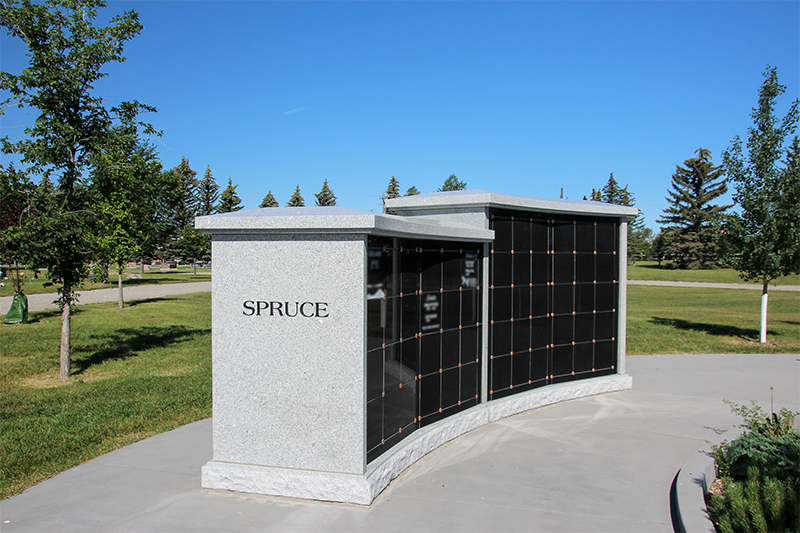
Flush Foundation
There are two common foundation elevation styles:
- Raised Foundation: Sits above the surrounding ground or sidewalk. Great for drainage and aesthetic elevation but requires precise measurement, leveling, and edge alignment—especially if there’s a curved footprint.
- Flush Foundation: Level with the ground or sidewalk. Offers easy access and simpler landscaping integration.
Both styles are acceptable. However, your choice should be discussed with the columbarium manufacturer early in the planning process to ensure proper fit and finish.
Post-Pour Process: Inspection and Readiness
Once the foundation is poured, here’s what you should do next:
- Check for levelness – Take a side-view photo with a level placed on top of the foundation and share this with your columbarium manufacturer.
- Take access photos – Wide-angle photos of the site and access paths are important so the columbarium team can plan delivery and crane access.
- Curing time – Concrete generally requires up to 4 weeks to fully cure. In some cases, installation can happen sooner, but the columbarium manufacturer must confirm that the foundation is fully set and ready.
Communicate foundation updates with your columbarium supplier. Some manufacturers may not begin construction of the columbarium until the foundation is confirmed to be ready. Production schedules can be flexible—but only if they know your timeline. Concrete foundation delays can be common during construction season, so keeping the manufacturer informed helps avoid any disruption.
Seasonal Considerations
If installation is expected during winter months:
- Protect the foundation from snow, ice, and salt
- Use tarps, hay, or plywood to keep the foundation clear of snow and ice
- Avoid pebble-based rock salt, which can interfere with installation. If used, it must be swept away completely prior to setting the columbarium.
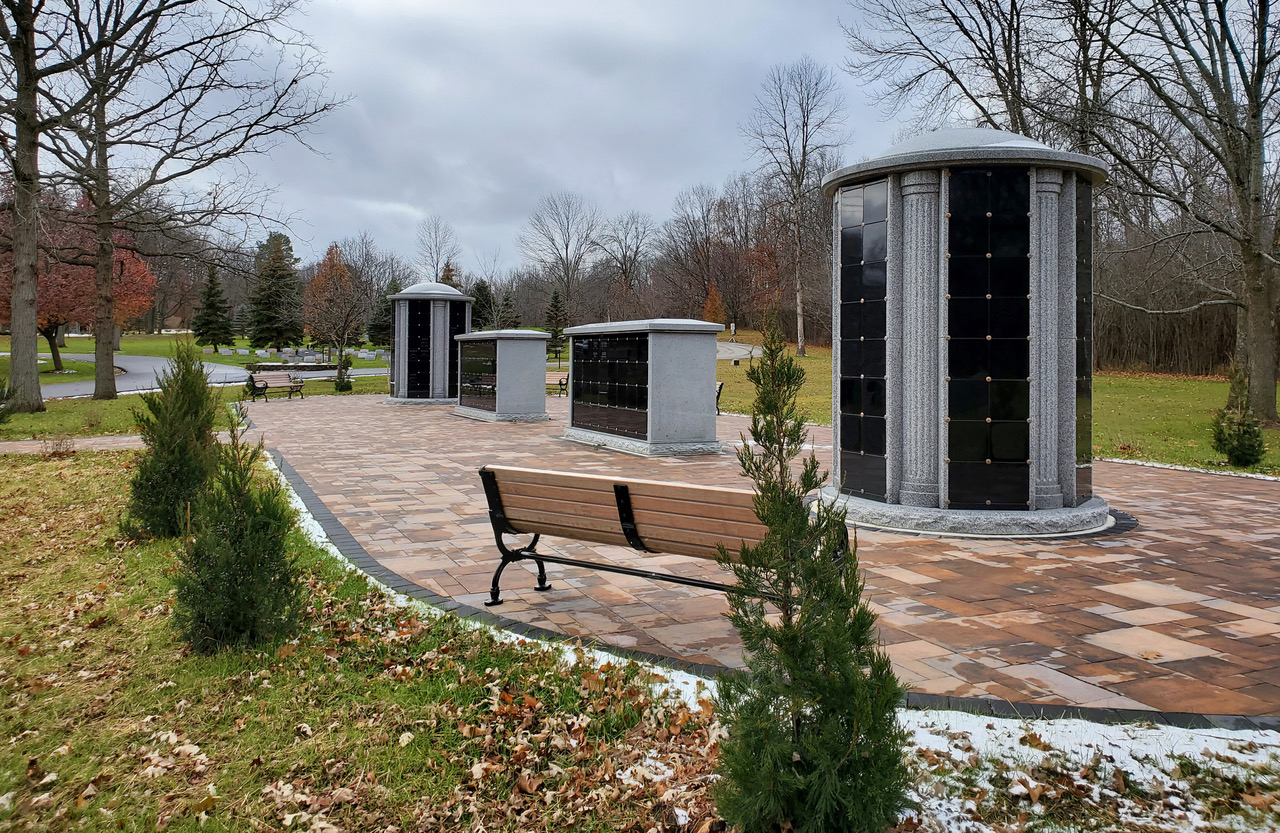
Building a lasting columbarium structure starts beneath the surface. Soil testing and proper columbarium foundation preparation are essential steps that ensure your memorial remains safe, beautiful, and structurally sound for generations. Work with experienced contractors, consult with engineers, and stay in close contact with your columbarium supplier throughout the process.
A small investment in testing and planning today can prevent significant structural issues tomorrow. Done right, your columbarium will be a place of remembrance, and architectural beauty— an “attraction” for all the right reasons.
Columbarium USA is a subsidiary of Sunset Memorial & Stone LTD.

